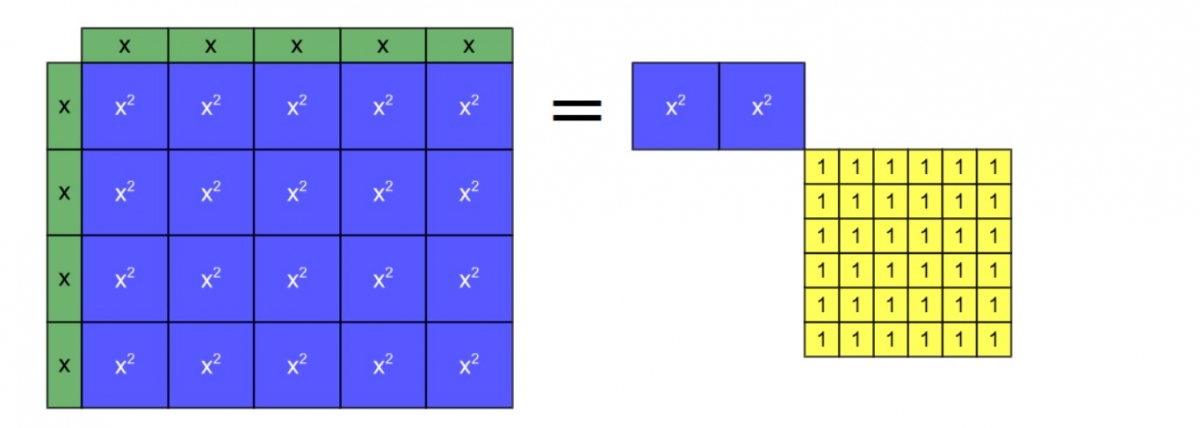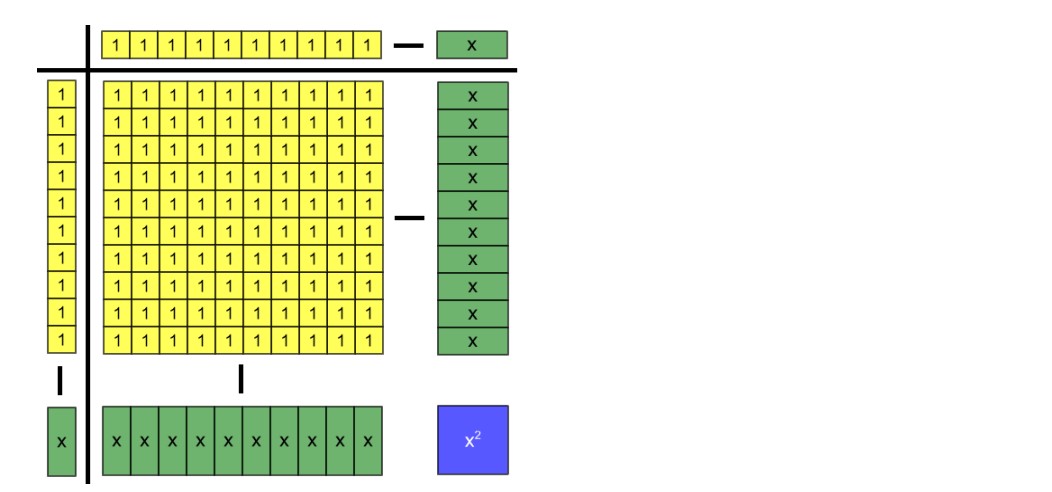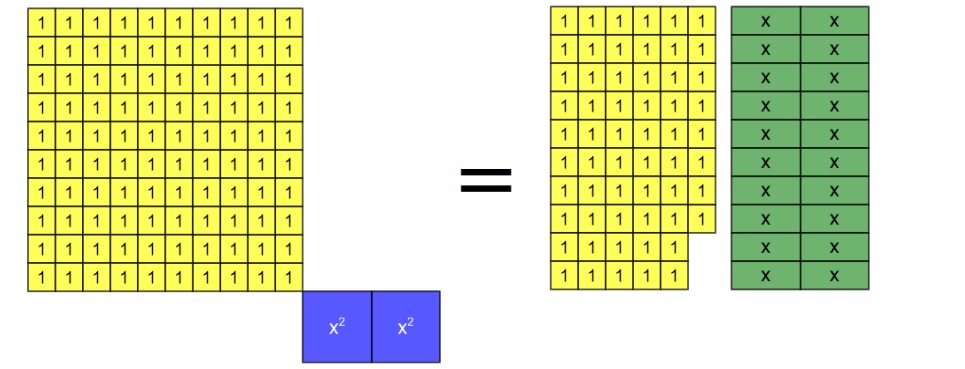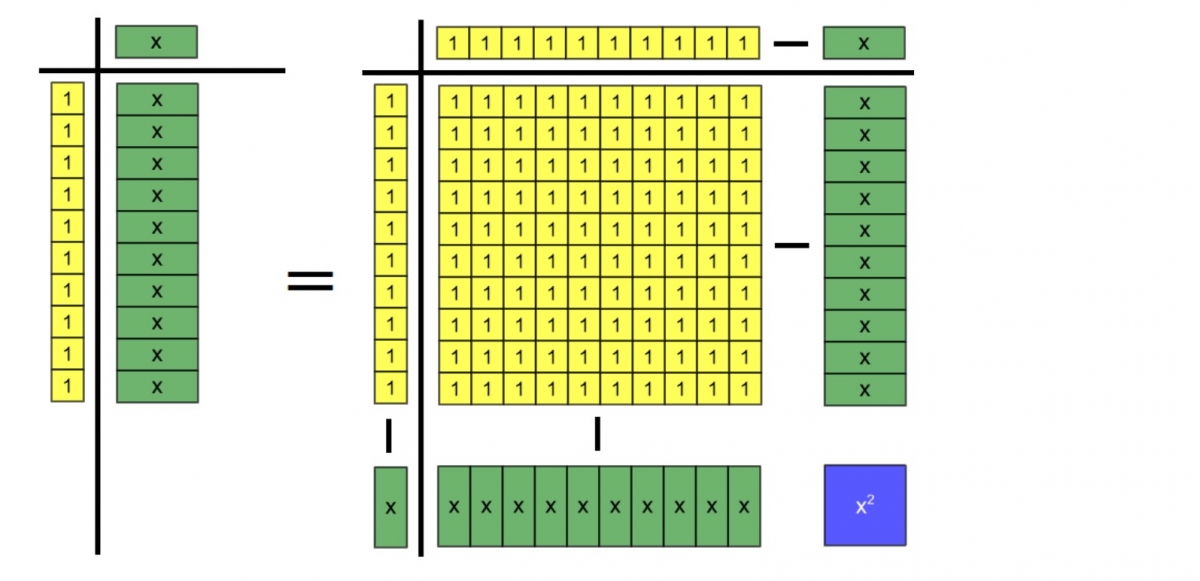Algebra Tiles Explorations of al-Khwārizmī ’s Equation Types: Modeling al-Khwārizmī’s More Complicated Problems
Following his treatment of the solution procedures for each of the six cases of equation, al-Khwārizmī went on in his treatise to present six problems “which will serve to bring the subject nearer to the understanding, to render its comprehension easier, and to make the arguments more perspicuous” [Rosen 1831, 35]. These problems were followed by a large collection of “various questions” that further illustrated how al-Khwārizmī’s procedures for “calculating by completion and reduction must always necessarily lead you to one of these cases” [Rosen 1831, 35]. In the examples below, we illustrate how to model such problems using algebra tiles. We have selected these particular examples in part because they avoid the use of fractions and mixed numbers, yet show the complexity of the equations that al-Khwārizmī treated. Because some problems involve the difference of two quantities, note that it is very natural to use subtraction within the algebra tile models. Following al-Khwārizmī’s advice to his readers that they should “reduce this [equation] according to the rules, which I have above explained to you” [Rosen, 1831, 51], we have omitted the algebra tile representations for some of the later details in our last two examples.
- Example 11: A problem leading to the case “squares = numbers”
- Example 12: A problem leading to the case “squares = numbers"
- Example 13: A problem leading to the case “squares = roots”
- Example 14: A problem leading to the case “squares and numbers = roots”
- Example 15: A problem leading to the case “squares and numbers = roots”
Algebra Tiles Explorations of al-Khwārizmī ’s Equation Types: Modeling al-Khwārizmī’s More Complicated Problems – Example 11
Example 11: A problem leading to the case “squares = numbers” [Rosen 1831, 55]
To find a square, four roots of which, multiplied by three roots, restore the square with a surplus of forty-four dirhems, then the solution is: that you multiply four roots by three roots, which gives twelve squares, equal to a square and forty-four dirhems.

Remove now one square of the twelve on account of the one square connected with the forty-four dirhems. There remain eleven squares, equal to forty-four dirhems. Make the division, the result will be four, and this is the square.

Continue to Example 12.
Back to Overview of al-Khwārizmī’s More Complicated Problems.
Algebra Tiles Explorations of al-Khwārizmī ’s Equation Types: Modeling al-Khwārizmī’s More Complicated Problems – Example 12
Example 12: A problem leading to the case “squares = numbers” [Rosen 1831, 55]
A square, four of the roots of which multiplied by five of its roots produce twice the square, with a surplus of thirty-six dirhems; then the solution is: that you multiply four roots by five roots, which gives twenty squares, equal to two squares and thirty-six dirhems.

Remove two squares from the twenty on account of the other two. The remainder is eighteen squares, equal to thirty-six dirhems. Divide now thirty-six dirhems by eighteen; the quotient is two, and this is the square.

Continue to Example 13.
Back to Overview of al-Khwārizmī’s More Complicated Problems.
Algebra Tiles Explorations of al-Khwārizmī ’s Equation Types: Modeling al-Khwārizmī’s More Complicated Problems – Example 13
Example 13: A problem leading to the case “squares = roots” [Rosen 1831, 35–36]
I have divided ten into two portions; I have multiplied the one of the two portions by the other; after this I have multiplied the one of the two by itself, and the product of the multiplication by itself is four times as much as that of one of the portions by the other.
Computation: Suppose one of the portions to be thing, and the other ten minus thing: you multiply thing by ten minus thing; it is ten things minus a square.

Then multiply it by four, because the instance states "four times as much." The result will be four times the product of one of the parts multiplied by the other. This is forty things minus four squares.

After this you multiply thing by thing, that is to say, one of the portions by itself. This is a square, which is equal to forty things minus four squares.

Reduce it now by the four squares, and add them to the one square. Then the equation is: forty things are equal to five squares;

and one square will be equal to eight roots, that is, sixty-four;

the root of this is eight, and this is one of the two portions, namely, that which is to be multiplied by itself.

The remainder from the ten is two, and that is the other portion.

Thus the question leads you to one of the six cases, namely, that of “squares equal to roots.”
Continue to Example 14.
Back to Overview of al-Khwārizmī’s More Complicated Problems.
Algebra Tiles Explorations of al-Khwārizmī ’s Equation Types: Modeling al-Khwārizmī’s More Complicated Problems – Example 14
Example 14: A problem leading to the case “squares and numbers = roots” [Rosen 1831, 39–40]
I have divided ten into two parts; I have then multiplied each of them by itself, and when I had added the products together, the sum was fifty-eight dirhems.
Computation: Suppose one of the two parts to be thing, and the other ten minus thing. Multiply ten minus thing by itself; it is a hundred and a square minus twenty things.

Then multiply thing by thing; it is a square.

The sum is a hundred, plus two squares minus twenty things, which are equal to fifty-eight dirhems.

Take now the twenty negative things from the hundred and the two squares, and add them to fifty-eight; then a hundred, plus two squares, are equal to fifty-eight dirhems and twenty things.

Reduce this to one square, by taking the moiety of all you have. It is then: fifty dirhems and a square, which are equal to twenty-nine dirhems and ten things.

Then reduce this, by taking twenty-nine from fifty; there remains twenty-one and a square, equal to ten things.

Halve the number of the roots, it is five; multiply this by itself, it is twenty-five; take from this the twenty-one which are connected with the square, the remainder is four. Extract the root, it is two. Subtract this from the moiety of the roots, namely, from five, there remains three.4 This is one of the portions; the other is seven. This question refers you to one of the six cases, namely “squares and numbers equal to roots.”
Continue to Example 15.
Back to Overview of al-Khwārizmī’s More Complicated Problems.
Notes
4. Note that “twenty-one and a square, equal to ten things” is a Type 5 equation that can be modeled using the procedure from the section "Squares and Numbers are Equal to Roots"; therefore, the algebra tile representations of these final steps have been omitted.
Algebra Tiles Explorations of al-Khwārizmī ’s Equation Types: Modeling al-Khwārizmī’s More Complicated Problems – Example 15
Example 15: A problem leading to the case “squares and numbers = roots” [Rosen 1831, 51]
I have divided ten into two parts; I have multiplied the one by ten and the other by itself, and the products were the same; then the computation is this:
You multiply thing by ten; it is ten things. Then multiply ten less thing by itself; it is a hundred and a square less twenty things, which is equal to ten things.

Reduce this according to the rules, which I have above explained to you.
Continue to Classroom Implementation and Concluding Remarks.
Back to Overview of al-Khwārizmī’s More Complicated Problems.